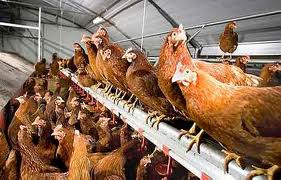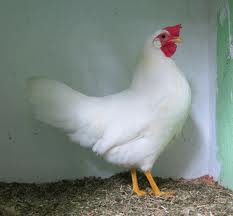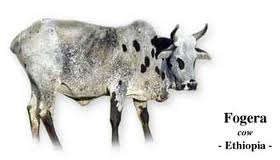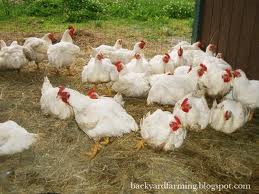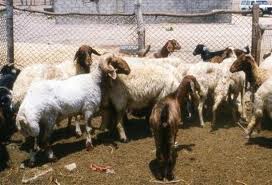Volume 1 : Issue 3 - May 2011
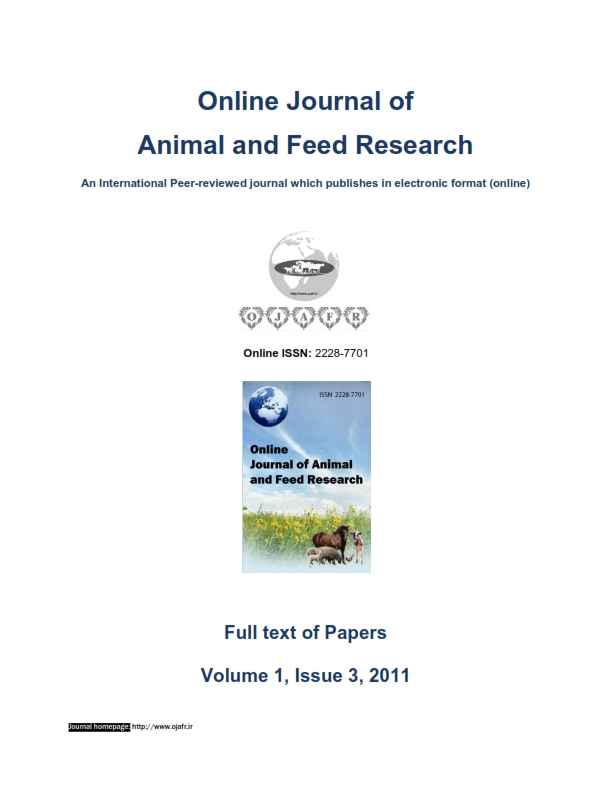
Table of Contents, 25 May 2011
| Research Title and Field Article (Abstract) |
|
Effect of different of ratios of coarse and fine limestone particles on production and shell quality of layers at peak production
|
Original Research, A13 Phirinyane, T.B., Van der Merwe, H.J., Hayes, J.P. and Moreki, J.C. Online J. Anim. Feed Res., 1(3): 86-91.2011. ABSTRACT: A study was conducted to determine the influence of different particle sizes of limestone in layer diets on egg production and eggshell quality from 18 to 28 weeks of age. Limestone consisting of small (<1.0 mm) and coarse (2.0 - 3.8 mm) particles that is used in poultry diets was obtained from a South African company. The two particle sizes were mixed to produce five treatments viz. 100 fine (F): 0 coarse (C); 75 F: 25 C, 50 F: 50 C, 25 F: 75 C and 0 F: 100 C. Diets were isocaloric and isonitrogenous. A total of 167 point of lay pullets (18 weeks) were obtained from a commercial pullet farm and were individually caged. The pullets were randomly allocated to five treatments (n = 33) to determine egg production and eggshell quality characteristics. Egg production and eggshell quality data were recorded on individual bird basis and summarized at the end of the week. Dietary treatment did not influence (P>0.05) egg production and egg shell quality (shell thickness, egg weight, egg output, egg surface area, shell percentage and SWUSA) at 24 weeks of age. These results suggested that the influence of dietary limestone particle size distributions at a later stage of the laying period on egg production and egg quality needs further investigation. Keyword: Calcium, Egg production, Egg weight, and Eggshell quality |
|
|
Influence of some major genes on early lay traits of crossbred local Pullets in a Humid Tropical Environment
|
Original Research, A14 Oke., U.K. Online J. Anim. Feed Res.,1(3): 92-98.2011. ABSTRACT: The study evaluated the effect of some major genes on early lay characteristics of Nigerian local pullets in randomized complete block design experiment. A total of 210 day-old crossbred local chicken were generated from a main and reciprocal crossing of local chickens possessing some major genes (naked-neck (Na), frizzle (F), and normal feathered genes (na). Results indicate that feed per hen, feed per dozen egg, and percent hen-day production did not differ significantly (P>0.05) among the genotypes. However, significant difference (P<0.05) were observed in body weight at first egg, age at first egg , age at sexual maturity, weight of first egg and egg number at 56 days with greater (P<0.05) value favoring F genotypes. Highest significant (P<0.05) values of weight at 1st egg were also noted in F/F genotypes (38.22±0.70g) and shell thickness (0.92mm±0.01), respectively. Highest significant means of yolk weight, yolk height, and yolk index and yolk width were obtained from F/F, Na/F and Na/Na genotypes. There were no significant difference (P>0.05) observed in albumen weight, albumen height and Haugh unit among genotype groups. However, HU values were very high in all the genetic groups. Highest positive significant correlation among egg weight, yolk weight, albumen weight and Hough unit were obtained in Na/Na, Na/F, and F/Na. Eggs laid by F/F, F/Na, Na/F and Na/Na were better in external egg qualities than other genetic groups. It is suggested that F and Na genes should be involved in the improvement of egg quality traits in the humid tropics. Keywords: Major genes, early lay traits, crossbred local chicken, humid tropics |
|
|
Reproductive Performances of Fogera Cattle at Metekel Cattle Breeding and Multiplication Ranch, North West Ethiopia
|
Original Research, A15 Melaku M., Zeleke M., Getinet M., Mengistie T. Online J. Anim. Feed Res., 1(3): 99-106.2011.
ABSTRACT: The study was conducted to evaluate the reproductive performance and to asses non-genetic factors affecting the reproductive performance of Fogera cattle breed kept at Metekel ranch. For this purpose data collected from 1996 to 2008 in the ranch were used. The data were analyzed using the general linear model procedures of statistical analysis system. The effect of mating system, parity of dam, year of birth and calving, season of birth and calving, sex of calf, and sire breed were considered as fixed effects for evaluating different reproductive parameters. The overall least square means for number of services per conception (NSP), age at first calving (AFC), calving interval (CI), gestation length (GL) and days open (DO) were 1.28±0.06 and 50.8±0.36 months, 587±5.44, 282±0.26 and 285±4.3 days, respectively. The number of services per conception was significantly (P<0.05) affected by mating system. Age at first calving was affected significantly (P<0.05) by year of birth. Calving interval was significantly influenced by parity of dam and season of calving (P<0.05) and year of calving (P<0.01). Gestation length was significantly affected by season of calving and breed of sire (P<0.01) and parity of dam (P<0.05) but not affected by sex of calf (P>0.05). Days open was significantly (P<0.01) affected by year of birth. From the present study, it can be concluded that the non-genetic factors had exerted significant effects on the reproductive performance of Fogera Cattle breed kept at ranch. Thus, to improve reproductive performance of the Fogera cattle breed, great effort should be made towards mitigating negative impacts of those non-genetic factors. Keywords: Age at first calving, calving interval, days open, Fogera cattle, gestation length |
|
|
Effects of supplemented diets with garlic organic extract and streptomycin sulphate on intestinal microflora and nutrients digestibility in broilers
|
Original Research, A16 Dieumou, F.E., Tegui A., Kuiate, J.R., Tamokou, J.D., Doma, U.D., Abdullahi, U.S., Chiroma, A.E. Online J. Anim. Feed Res., 1(3): 107-113.2011.
ABSTRACT: This experiment was carried out to study the effects of garlic organic extract and streptomycin sulphate on intestinal microflora and nutrients digestibility in broilers. Forty eight Hubbard line one day old chicks with equal numbers of males and females were randomly divided into four treatments to conduct a 4x2 factorial experiment in a completely randomised design. The diets were supplemented with: no supplement (control), garlic organic extract at 40 ppm/kg (GOE 40ppm), garlic organic extract at 60 ppm/kg (GOE 60ppm) and streptomycin sulphate at 30 ppm/kg (SS 30ppm) administered by oral gavage from day13 to day 47 of experiment. There were two birds (males or females) per experimental unit, replicated three times in twenty four deep litter pens. The colony forming units of Escherichia coli were significantly lower (P<0.001) in the ileo-caecal digesta of birds on streptomycin sulphate (3.33 x 105) followed by the garlic organic extract treated groups (4.08 x 105) compared with the control (8.50 x 105). The same observation was made for Staphylococcus aureus (P<0.001). The colonies of Salmonella and Shigella spp were statistically similar between streptomycin sulphate and garlic essential oil treated groups (1.65 x 105), but they were significantly (P<0.001) reduced compared with the values obtained in the control group (4.53 x 105). Female broilers had higher (P<0.001) colony forming units of enterobacteriaceae, Salmonella and Shigella spp and Staphylococcus aureus in their ileo cecal digesta than the males. Even within the treatment and sex interaction, female birds generally recorded higher number of colony forming units as compared with the males. Only mold fungi were found in the ileo-cæcal digesta of all the groups. Significant improvement in apparent digestibility of nutrients except for the calcium and inorganic phosphorus absorption rate in birds on supplemented diets was observed (P<0.01) compared with those on the control. There were no significant differences (P>0.05) in nutrients absorption between male and female broilers. Treatment and sex interaction significantly (P<0.05) affected all the parameters studied indicating a synergistic effect of the two factors on nutrients absorption. It could be concluded that GOE even at 40 ppm/kg controlled pathogens and improved nutrients digestibility in birds. Keywords: Garlic organic extract, ileo- cecal digesta, intestinal microflora, nutrients digestibility, streptomycin sulphate. |
|
|
Influence of the nature of the energy source in the concentrate on the concentration and molar proportions of volatile fatty acids in rumen of sicilo-sarde sheep breed 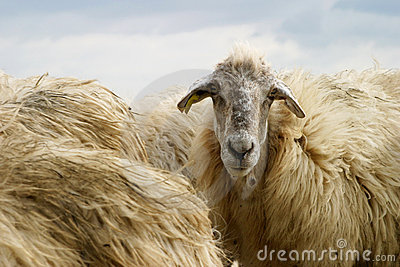 |
Original Research, A17 ABSTRACT: The effect of the nature of the source of energy supplementation on ruminal pH, concentration of volatile fatty acids (VFA) and the proportions of the main acids in the rumen of the dairy Sicilo-Sarde breed were evaluated. Four rams with an average live weight at the beginning of the experience of 45.25 ± 3.5 kg and aged 4.8 ± 0.5 years, fitted with permanent cannulas in the rumen were used in this experiment. The animals had a common basal diet at 1.5 kg DM / head / day of oat hay supplemented in turn by four concentrate at 500 g / head / d. Concentrates differed by the nature of energy ingredients they contain. The concentrate A: included 10% barley, 43.3% corn, 25% wheat bran, 17.7 % soybean meal and 4% CMV; The concentrate B was made of 66% white sorghum, 30 % beans and 4% CMV; the concentrate C had 71% triticale, 18% horse bean, 7% soybean meal and 4% CMV; and finally the D concentrate included 71.5% barley, 17.5% field bean, 7% soybean meal, and 4% CMV. 50 ml samples were taken before, 2, 5 and 8 hours after the distribution of the morning meal, and were filtered through four layers of surgical gaze. These samples were used for the analysis of volatile fatty acids (VFA) concentrations by gas chromatography. Results showed that the rumen pH was statistically different (P<0.05) before and 2 hours after the morning meal distribution among concentrates. It was in favour of C and D (P<0.05) concentrates but it has stabilized at the end of the day (P>0.05). The concentration of total VFA was significantly higher (P<0.05) for diets C and D just after the distribution of the meal before it became comparable (P>0.05) among concentrates after 5 and 8 hours post prandial. The proportion of acetate and butyrate (C2 and C4) acids evolved in the same way during the day regardless of the regimen but were in a reversed manner for the propionic acid (C3). Keywords: Acetate, butyrate, supplements, energy source, pH, propionate |
|
|
Reproductive performance of Rahmani and Chios sheep and their lambs under Upper Egypt conditions
|
Original Research, A18 Abd-Allah, M., Abass, S.F., Allam, F.M. Online J. Anim. Feed Res.,1(3): 121-129.2011.
ABSTRACT: The differences of fertility and prolificacy traits for Rahmani and Chios ewes were studied in this investigation. The study was conducted during two consecutive years that included three lambing season with a total of 273 ewes (162 Rahmani and 111 Chios) bred, 230 ewes lambing, 280 lambs born and 237 lambs weaned. Breed of ewes had a significant effect on fecundity, lambing rate and weaning rate. Mating season and year did not significantly affect fertility traits. Age of ewes had a significant effect on fecundity, lambing rate and weaning rate. Breed of ewes had a significant (P<0.01) effect on prolificacy traits. Mating season and year had no significant effect on prolificacy traits. Age of ewes had a significant effect on prolificacy traits, except litter weight at weaning, Chios ewe lambs reached puberty and maturity at younger age and they had heavier body weight than Rahmani ewe lambs. The effects of birth type and weaning system on reproductive traits of ewe lambs were not significant. Early weaned lambs reached puberty and maturity earlier than normal and late weaned lambs. Breed of lambs, birth type and weaning system had no significant on age and weight at puberty of ram lambs, except age at puberty which was significantly affected (P<0.05) by weaning system. Keywords: Reproductive performance, Rahmani sheep, Chios sheep, puberty, sexual maturity. |
|
| < Prev | Next > |
|---|




